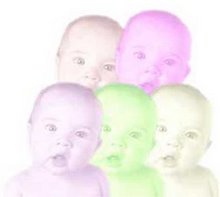We have all emailed each other our slide presentations. The merger of our paper has been done and we have accomplished a collaborative effort for all parts that are required.
It was a great group effort and I have enjoyed working with both of you.
Thursday, May 17, 2007
Wednesday, May 16, 2007
Update on Collaboration Tools
Tuesday night, Alicyn, Kathleen and I did a conference call to keep each other posted on our project. We're all on the process of writing our own part of the paper. Once we have finished, we will put the information we need on our slides and finish our powerpoint.
Monday, May 14, 2007
Team Project Reminder

Wow...I was able to accomplish so much reading this weekend on my piece of the project, Ethics of Bio-Medical Cloning. I really feel well read on the subject now and highly recommend The President's Council on Bioethics: Human Cloning and Human Dignity: An Ethical Inquiry . It's an easy read and details both sides of the argument. I wanted to remind the group that we have a collaborative tool meeting tonight as Kathleen will be initiating a conference call at 8:00p. Before then, take a look at the powerpoint template in your email box so that we can comment on it at our meeting. Talk to you then....
Thursday, May 10, 2007
History of Cloning

Cloning has been going on in the natural world for thousands of years. A clone is simply one living thing made from another, leading to two organisms with the same set of genes. In that sense, identical twins are clones, because they have identical DNA. Sometimes, plants are self-pollinated, producing seeds and eventually more plants with the same genetic code. Some forests are made entirely of trees originating from one single plant; the original tree spread its roots, which later sprouted new trees. When earthworms are cut in half, they regenerate the missing parts of their bodies, leading to two worms with the same set of genes.
The first cloning was in the late 1800's by Hans Dreisch. Dreich's experiments involved sea urchins which he chose because of the ability to grow without intervention of their mothers and the embryo cells were large enough to split. In 1902 another scientist produced a clone of a salamander he would be able to prove that no genetic material was lost as cells grew and divided.
There were no major advances in cloning until November of 1951, when a team of scientists in Philadelphia working at the lab of Robert Briggs cloned a frog embryo. They took the nucleus out of a frog embryo cell and used it to replace the nucleus of an unfertilized frog egg cell. Once the egg cell detected that it had a full set of chromosomes, it began to divide and grow. This was the first time that this process, called nuclear transplant, was ever used, and it continues to be used today, although the method has changed slightly.
In 1986 two teams working independently in different parts of the perform the same type of clone on a mammal. One team working on a cow embryo and the other team a sheep's embryo. More work was done, and on July 5, 1996, a lamb was born, cloned from a frozen mammary cell from another adult sheep. Wilmut, who names his animals very creatively, named her Dolly after Dolly Parton. Although Dolly was just a step in a long experiment, the press descended upon the first animal cloned from an adult. Other scientists were critical -- Dolly took 277 tries to create, and other labs were unable to reproduce the results. In addition, it took over a year for the institute to test Dolly's DNA to make sure that it was indeed the same as that of the frozen mammary cells.
Sunday, May 6, 2007
Thursday, May 3, 2007
Here's Our Team
Kathleen Michelle and Alicyn have decided on the topic of Ethics in Human Cloning for our group research project.
Subscribe to:
Comments (Atom)

